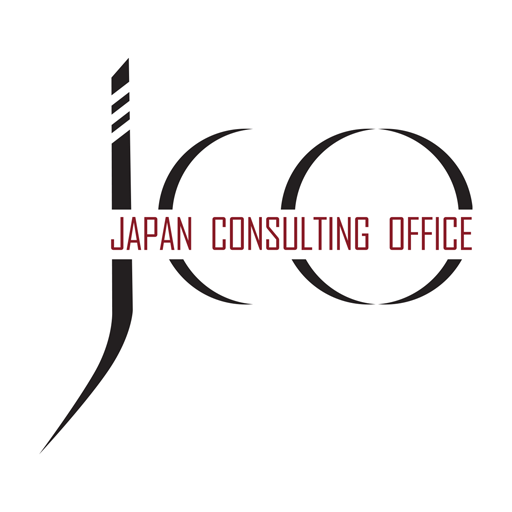
(Autor: Nikolaus Mach-Hour, Head of JCO Germany / VP global strategy)
I have been working with Japanese colleagues, clients and partners for over 30 years and, in this article series, I would like to show in what form I have observed the on-going change within Japanese companies in recent years.
For decades, Japanese companies have been viewed as old-fashioned, resistant to change and too risk-averse to truly meet the rapid changes within the global business landscape. This reputation not only preceded Japanese companies operating solely inside Japan but also large multinational corporations, active in almost every country in the world.
These assessments, for the longest time based on hard data as well as subjective observation, were difficult to argue with. But a lot of change happened in recent years, so let me try to look beyond old stereotypes.
By taking examples from the more than 500 of Japanese companies that JCO is supporting all around the world, I will try to showcase how Japanese SME as well as the large corporations are trying to modernize.
In the series, we will look at the following topics:
- A changing mindset around the “Japanese way”
- Changes in the top management of Japanese companies
- Changes in HR strategies
- Changes in policies on gender, inclusion and diversity
- Changes at the workplace
- Changes in business strategy
There is a lot to discuss so let us begin!
1. A changing mindset around the “Japanese way”
In every company around the world we can find a certain tension when comparing company vision and its stated goals to the actual policies and strategies that are being implemented.
As early as the first decade of this century, everyone working with or in a Japanese company surely has seen countless posters, mottos and “letters from the president” promising and/or demanding a “global” attitude. But for many years there seemed to be an intractable barrier when it came to following through and making things really globally oriented.
Many fields in need of updating come to mind, starting with the question whether non-Japanese managers and executives could fully take part in strategic decision making. It also was often unclear to what extent Japanese companies really were willing to adapt their approach and product range to local requirements in every market. The question of diversity among staff in- and outside of Japan was also not yet tackled in a manner that represented real change in many cases.
But since around 10 years ago, in the case of more progressive companies - the last 4 to 5 years for more conservative ones - we can observe a change in mindset in our discussions with upper Japanese management and see concrete modernisation measures being implemented.
The reasons are obvious; in this VUCA (volatile, uncertain, complex and ambiguous) world Japan’s traditional Unique Selling Points like the famous “monotsukuri”/manufacturing spirit are no longer enough to successfully create and sell products globally.
On top of that decade-spanning trends in Japanese society regarding the available workforce such as the very low birth rates as well as the continuing individualisation of the younger generations have greatly contributed to the need for modernisation.
Many changes had been discussed for years if not decades but are now finally being initiated. It is hard to measure precisely to what degree the natural replacement of personnel within the upper management layers (through retirement of older executives/promotion of younger generations) played a role in the scale of the changes, but it was certainly a major contributing factor. The pandemic has also rapidly accelerated this rejuvenation.
2. Changes in the top management of Japanese companies
Traditionally, the executive management of companies at Japan HQ (and in some cases in the subsidiaries abroad) was composed only of Japanese middle-aged and older men.
But at many of our customers there is now a strong trend:
A. To promote Japanese women to upper levels and to the board, not just as token members to fulfill a quota but as actual decision makers at the highest levels.
For an event on female leadership, we were fortunate to conduct an in-depth interview with a female CSO and board member of a JCO customer. Her assessment was that, although some of the old obstacles still exist, it would now be possible to work around them to achieve one’s objective.
While doing so, she is also helping to change the organizational framework to enable all female employees to combine work and private life thereby opening new avenues for female talent in the long run. (Also see item 4.A featured in the second part of this series)
B. To promote non-Japanese from local subsidiaries into the board in Japan and, in some cases, even make them CEO of the entire company.
There, of course, have been precedents for this but in the past these non-Japanese executives were often tied down by organizational constraints at HQ level.
In effect, despite their title they did not have the authority to enact fundamental change in the long run.These days, newly appointed non-Japanese CEOs are coming from successful non-Japanese companies which indicates that they explicitly have been chosen to modernize the way the Japanese companies operate.
In one case, the non-Japanese CEO of a well known and very large Japanese JCO customer has already changed the whole layout of the organization on a scale that would have been unimaginable before.
So, at least looking at the companies JCO is supporting, this time the new CEOs might be finally able to follow through on their assignment.
C. To promote younger managers to higher positions in their career than before, thereby stepping away from old notions of seniority-based promotion.Even though the median age of Japanese presidents keeps rising (now at 60 years with almost 25% older than 70 years), the average age of those that succeed the prior president is now at 52 years. At least among JCO customers, Japanese executives are promoted to general managers, directors and then presidents at a younger age than ever before.
The managers and executives JCO is supporting nowadays are often from a “new generation” of Japanese business (wo)men that have deep understanding of the changes needed to modernize and a very clear vision of where they want their company to go.
(Ende erster Teil)
Im nächsten Artikel beleuchten wir folgende Themen: Changes in HR strategies and Changes in policies on gender, inclusion and diversity.




